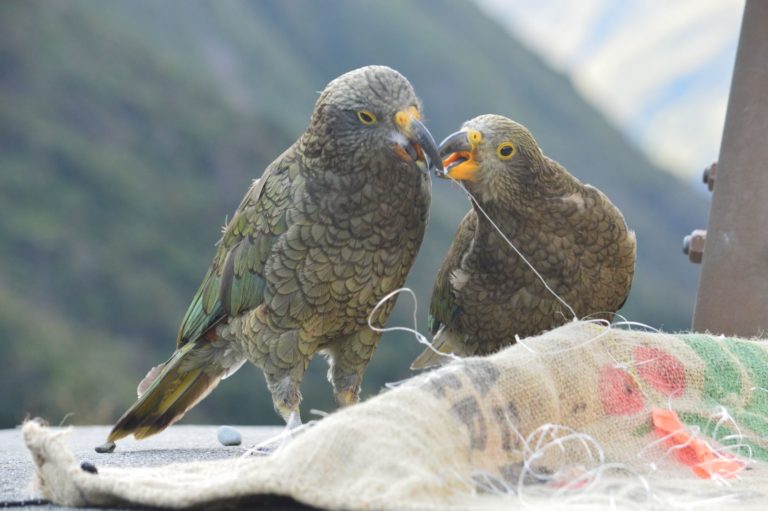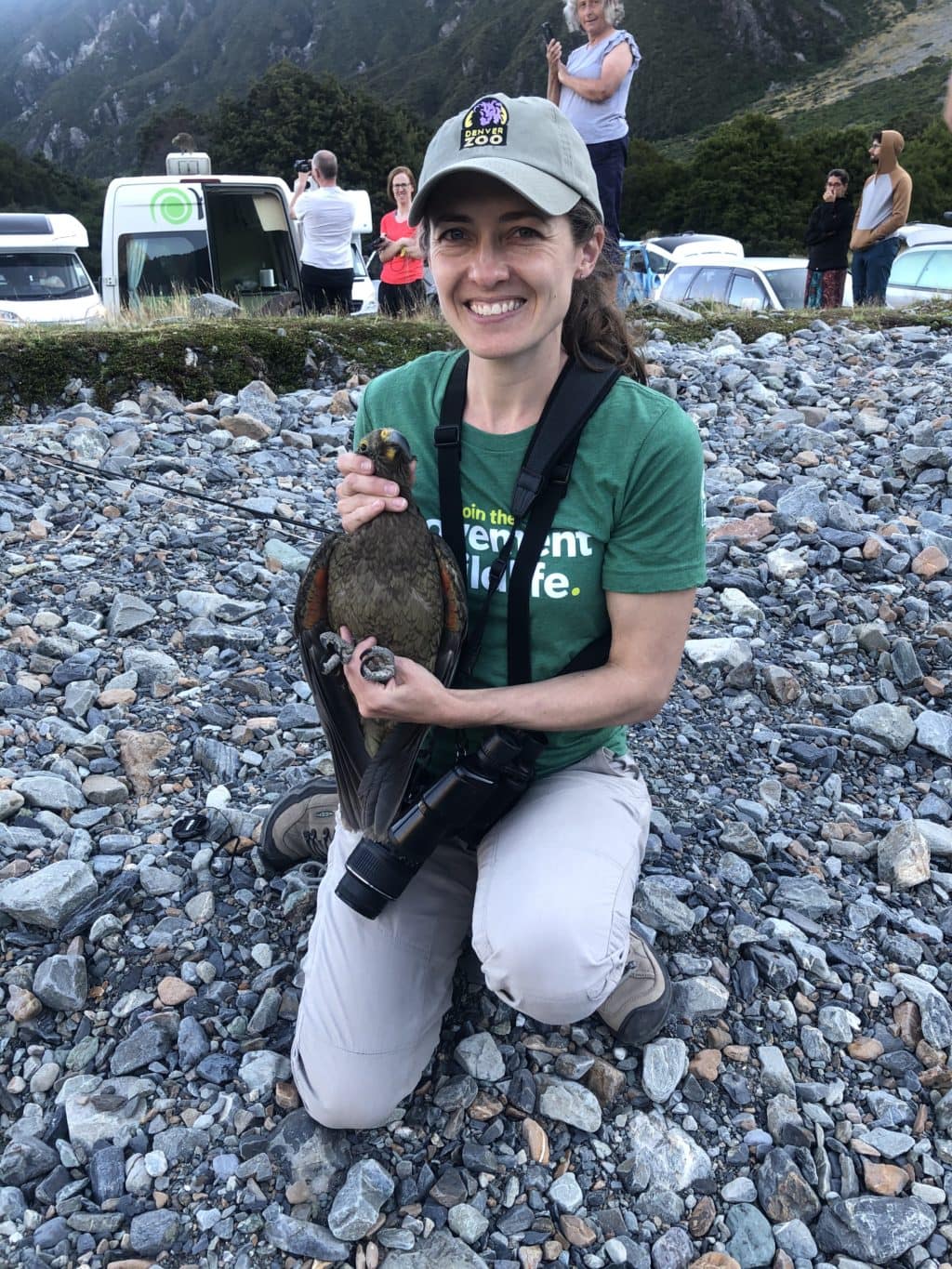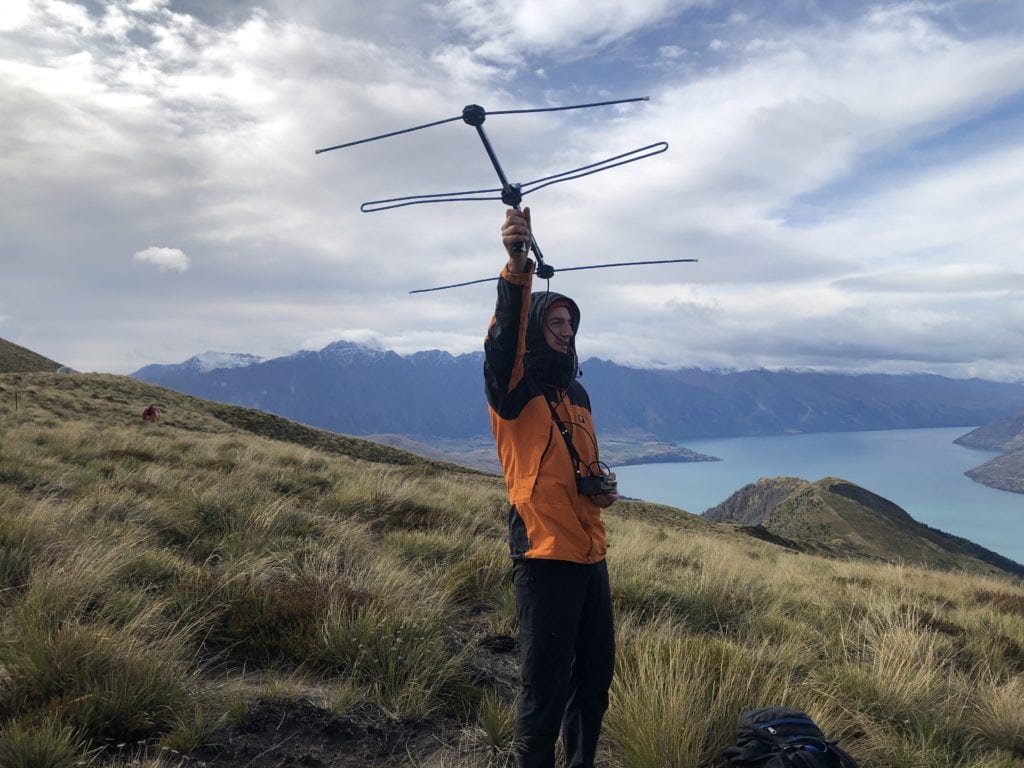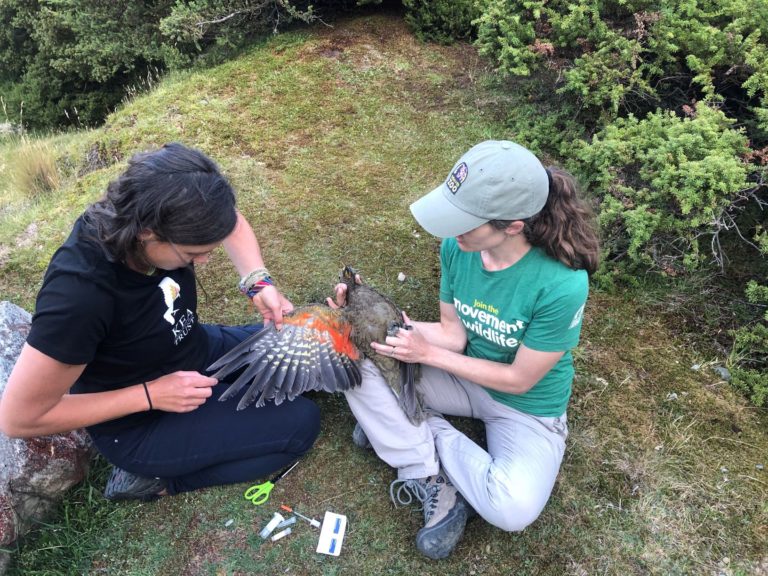By Jessica Meehan – Bird Keeper, Denver Zoo
18th - 27th February 2020
Funds were provided for me by Denver Zoological Foundation, to travel to New Zealand to assist Dr. Laura Young with Blood Lead Level Testing Project. During the trip we traveled throughout the South Island with the following results:
- Mt Cook/Aoraki: Captured and banded/tested 6 juvenile kea in the White Horse Hill Campground. All lead tests were medium-high, showing a continuing problem with lead on the buildings in this region. These finding coupled with a survey of lead on Department of Conservation (DOC) buildings in the village will allow KCT to offer solutions for replacing these materials with community support.
- Queenstown – Ben Lomond track: Searched for kea on this popular track where they have been sighted many times. No kea arrived or responded to playback calls this day.
- Franz Joseph/Okarito: Followed up on sightings of juvenile kea in this region at several sites. Observed and recorded sightings of 6 kea (adult and juvenile) but none of these would come to the traps. There was a kea caught by another team in this region that tested high for blood lead levels and was transported to Willowbank Wildlife Hospital.
- Arthurs Pass: Trapped 2 kea at Death’s Corner overlook – 1 juvenile was banded and 1 was recaptured for follow-up lead testing. Trapped 3 kea along the Avalanche Peak track – 2 juveniles were banded and 1 adult male was caught for re-testing. Caught 1 juvenile in Arthur’s Pass township which was banded and tested. Lead levels in all of these birds were fairly low, indicating a shift in typical results in this region which has had significant upgrades.
- Overall Results: A total of 12 kea were caught for lead testing while I was assisting Dr. Laura Young in the field. These results will be used to track trends for lead toxicity in each region so that problematic areas can be targeted for upgrades to buildings. There is some early evidence that upgrades in areas like Arthur’s Pass have caused a decrease in lead toxicity in young birds as compared to other regions which still need work. Follow-up testing on two older, previously tested birds will also provide information on the long-term affects of lead in kea.
Denver Zoo supporting kea monitoring
Further funding from the 2019 grant was provided to purchase a new Yagi aerial for tracking of transmittered kea in various regions as well as 2 way radios for use by the field teams while they work in the back country. The aerial was in use throughout the summer survey season including during the time I was here, although this specific one was being used in the Fiordland and Mt Aspiring National Parks. Starting February 23, the team was headed to a backcountry survey in the Murchison mountains to band and test more birds as well as follow up on previously banded birds, including the 9 females that were fitted with transmitters last year using 2018 Denver Zoo funding.
Supporting data entry to allow for population analysis
Also during this trip I met with Tamsin Orr-Walker, Chair of the KCT, to learn more about the KCT’s work and the threats to kea in the wild. This meeting provided a much deeper insight to the challenges, successes and needs of the KCT and will allow me as the Kea SSP Coordinator to advocate for the support of the KCT by other kea-holding institutions in North America. Tamsin, Laura and I also discussed my role in assisting with the Kea Database project that was funded by the 2020 ACFC grant.



